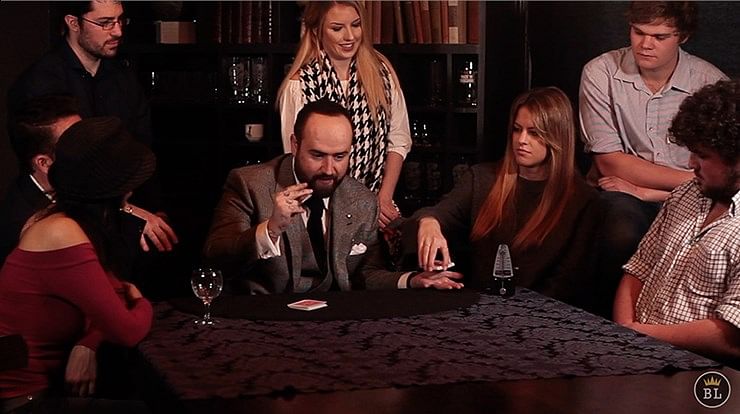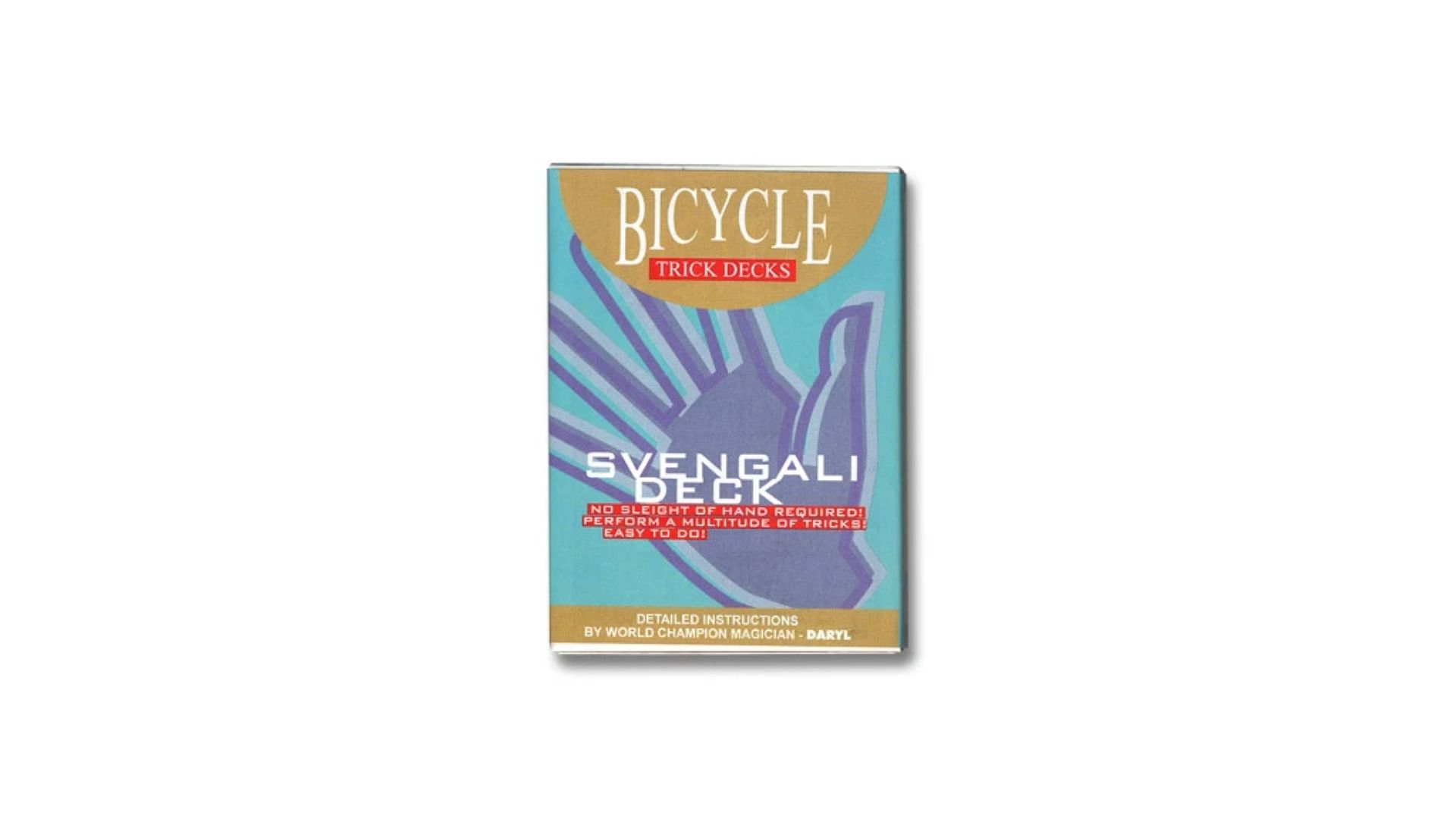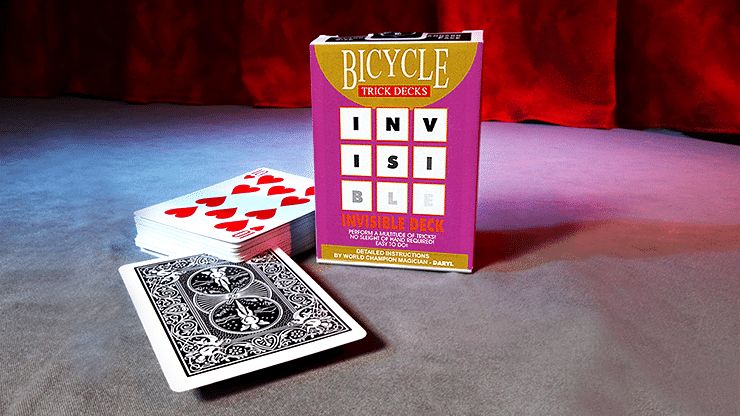Trick Decks
The old magic books tell us that magicians have been using trick decks since at least the 1500s. In Olivier Gouyn de Poictiers' book, Le mespris et contennement de tour jeux de sorts (1550), he discusses the magical use of marked decks and short and wide cards. It's quite possible that those trick decks were already in use my card cheats prior to that, but Poictiers' is certainly one of the earliest references to a trick deck being used for a magic trick.
Nowadays, trick decks are commonly used by newcomer magicians who want to learn some easy magic tricks without the need to practice difficult sleight of hand. But the real secret is that some of the best magicians in the world also use gimmicked cards, but they have discovered clever ways to use them so that you don't suspect (let alone detect) them.

In this article, we will share the five most common gimmicked decks with some examples of how you might use them (all of the decks we share are available in Bicycle back designs).
1. Marked Cards
It goes without saying that marked cards are in common use amongst magicians. With just a secret glimpse at the deck, you can discover the identity of a card by looking at its back. In the past, card cheats or magicians would have to prepare a marked deck by hand, using techniques such as blocking out, tinting, cutting out, or shading, but nowadays, card manufacturers print marked decks especially for use by magicians.
Our favourite marked deck comes from Luke Jermay, whose Marksman Deck is one of the most extreme trick decks out there. Instead of just marking the identity of a card, Luke has found a way to mark its location in the deck, the card next to it, the location of its mate and more.
Buy a Marked Deck
2. Svengali Deck
 A Svengali Deck consists of alternating short and long cards, which allow for some really creative ideas. The idea is relatively new in magic history and was first suggested by a magician called Ellsworth Lyman in The Sphinx magazine in 1907. In this version, the corners of the cards were cut short, instead of the now common cutting of the short edges of the deck.
A Svengali Deck consists of alternating short and long cards, which allow for some really creative ideas. The idea is relatively new in magic history and was first suggested by a magician called Ellsworth Lyman in The Sphinx magazine in 1907. In this version, the corners of the cards were cut short, instead of the now common cutting of the short edges of the deck.
The Svengali Deck is one of our best-selling trick decks because it allows for incredibly strong magic with very little technique required. If you have ever been to a magic shop and seen someone do a magic trick where a whole deck changes to a selected card, it's likely you have seen the Svengali Deck in action.
Buy a Svengali Deck
3. Brainwave Deck
Invented by one of card magic's most important characters, the Brainwave Deck, changed the course of trick decks. Dai Vernon was a well known East-coast American magician and his invention of the Brainwave Deck started a new trend. In effect, the spectator would name a card and the magician would show that the named card has turned over in the deck. Not only that, but the card has a different colour back to the rest of the deck. Prolific card magic author Karl Fulves refers to it as "one of the strongest tricks in magic" and he's probably right.
Buy a Brainwave Deck
4. Invisible Deck
 Officially, the Invisible Deck is the name of a trick and not a deck. You've probably seen the trick before: a magician hands a spectator an "invisible deck of cards" and asks them to shuffle the cards, remove any card, and reverse it in the deck. When the spectator throws the deck back to the magician, in becomes a real visible deck! The magician then spreads through to show the named card really is reversed in the deck.
Officially, the Invisible Deck is the name of a trick and not a deck. You've probably seen the trick before: a magician hands a spectator an "invisible deck of cards" and asks them to shuffle the cards, remove any card, and reverse it in the deck. When the spectator throws the deck back to the magician, in becomes a real visible deck! The magician then spreads through to show the named card really is reversed in the deck.
The real name of the deck is Ultra Mental Deck and was invented by Joe Berg. The presentation of the invisible deck was popularised by Don Alan, but actually was used prior to Don by J.B. Bobo (the man who wrote the famous book, Modern Coin Magic).
Buy an Invisible Deck
5. Stripper Deck
A Stripper Deck is another deck commonly sold at magic stores. It's a deck where one side is shaved at a very slight angle. This allows for some very good card revelations where a spectator shuffles a deck, removes a card, remembers it and then returns it to the deck. The magician is then able to find the card by feeling for the different orientation. The deck has been called a tapered deck, wizard deck, and biseauté deck — but they are all the same deck.
Magicians over the years have claimed that any trick done with a trick deck can be executed using sleight of hand. And while that clearly isn't true for some decks (such as common effects with a Svengali Deck), it is certainly true for most tricks that use a stripper deck.
Buy a Stripper Deck
